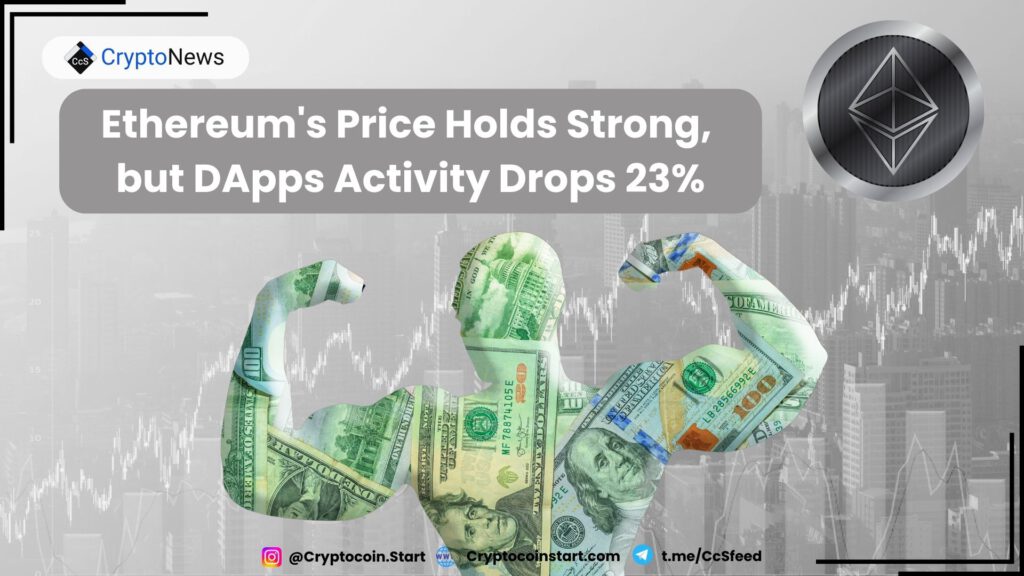
Decline in Onchain Activity Sparks Concerns for Ether Investors
In the past week, the Ethereum network saw a 23% drop in onchain decentralized applications (DApp) volumes. This downturn has raised speculation that Ether’s price could follow a similar trajectory.
Several factors have negatively impacted Ether’s price since mid-July, particularly the stagnant overall cryptocurrency market capitalization. Notably:
- The total cryptocurrency market cap, excluding stablecoins, declined by just 2% to $2.09 trillion over the past three months.
- In contrast, Ether’s price dropped significantly from $3,450 to $2,590, indicating a widening gap in investor sentiment.
This disparity suggests that investor confidence in Ether’s potential has weakened, warranting an exploration of possible reasons for its underperformance.
Stagnant Total Value Locked (TVL) in Ethereum
One contributing factor to Ether’s struggles may be the stagnation of Ethereum’s total value locked (TVL), which has remained around 19 million ETH for the past two months. Despite this stagnation, Ethereum commands a dominant 55% market share in onchain deposits, totaling $48 billion.
For context, BNB Chain’s TVL has also remained stable at approximately 8.1 million BNB during the same timeframe.
Comparative DApp Performance
Ethereum’s 7-day DApp volumes fell to $21.5 billion. Other competitors experienced similar declines:
- BNB Chain (BNB) saw a 33% drop.
- Solana (SOL) recorded a 26% decrease.
Despite these underwhelming numbers, there is no clear indication that Ether’s price will drop significantly based on this data alone.
However, notable weaknesses within the Ethereum network include:
- Uniswap: 16% decline in activity as of October 14
- Balancer: 54% drop in activity
- CoW Swap: 18% decrease
- 1inch Network: 23% decline
Reduced ETF Demand and Supply Burn Rate Impacts Investor Sentiment
Adding to the frustration among Ether investors is the lack of inflows into US-based spot Ether ETFs. According to Farside Investors, these ETFs experienced net outflows of $6 million in October. In contrast, Bitcoin (BTC) ETFs saw net inflows of $810 million between October 11 and October 14, indicating that while investor demand exists, it currently favors Bitcoin over Ether.
Ethereum’s supply continues to increase despite high network usage, which has disappointed investors. Vitalik Buterin, in a blog post on October 14, acknowledged this issue and proposed that improving transaction times through solutions like single-slot finality could enhance network efficiency. Currently, Ethereum transactions can take around 15 minutes, leading to congestion.
A Binance spokesperson noted that recent Ethereum network upgrades have spurred the adoption of lower-fee layer-2 solutions, thereby reducing the ETH supply burn rate. This trend gained traction following the activation of EIP-4844 in April 2023, designed to enhance layer-2 rollups by bundling and processing transactions more effectively.
Conclusion
In summary, while the decline in Ethereum DApp volumes reflects broader cryptocurrency market trends, the adoption of lower-fee layer-2 solutions and the reduced ETH supply burn have contributed to Ether’s recent underperformance. Investors will need to monitor these developments closely as they impact the future potential of Ether.

